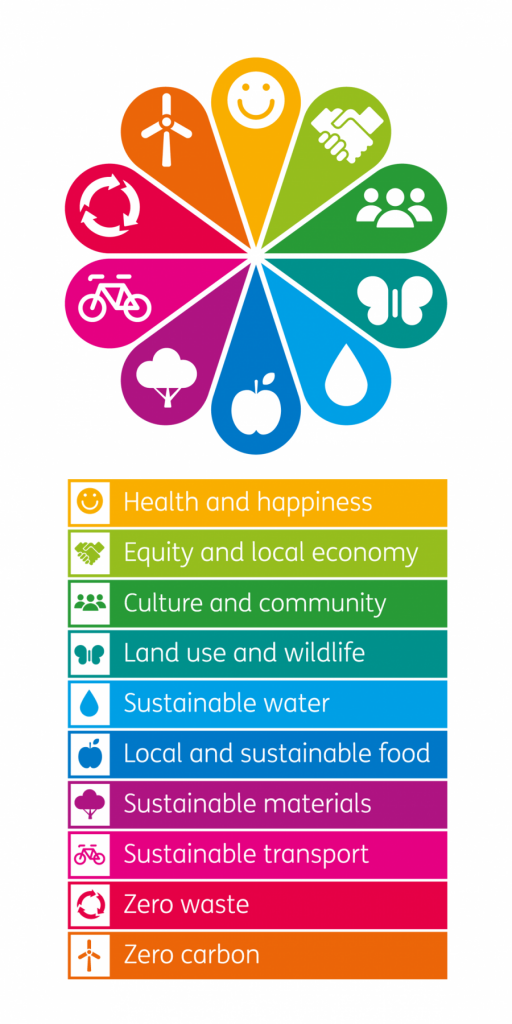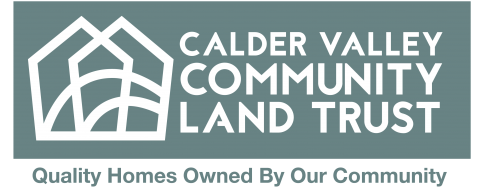Sustainability is core to CVCLT’s values. We aim not just to deliver our own homes to an exemplary environmental standard, but also to innovate in order to help raise standards across the built environment. Our aims are codified in our detailed sustainability policy.
We tried in our first development at Birks Court, Walsden to make the bungalows as sustainable as possible. We’re delighted that therefore that the development in Walsden is now featured on the Slow the Flow website as a case study in good practice. You’ll find the case study here: http://slowtheflow.net/category/case-studies/
CALDER VALLEY COMMUNITY LAND TRUST (CVCLT) SUSTAINABILITY POLICY
1. Policy statement
CVCLT will actively strive to reduce its carbon footprint and improve the local environment for the long-term benefit of the communities it serves. Climate change, fuel poverty, public health, flood resilience and environmental stewardship are the main drivers behind this commitment.
2. Strategic Aims and Objectives
Reducing our carbon footprint: We aim to reduce the amount of energy – including embodied energy – used by the homes we develop, the buildings we manage and the activities we undertake.
Using resources wisely: Through careful procurement and robust recycling, we aim to consume fewer resources and produce less waste and/or pollution.
Encouraging positive behaviour: We aim to encourage and enable the people we house and the communities with whom we work to use less energy, reduce their fuel bills, consume fewer resources and produce less waste. We will support them in doing this and encourage positive behaviour change.
3. Commitments and principles
• To use Bioregional’s 10 Principles of One Planet Living as a framework for delivering on our sustainability commitments.
• To work with contractors and suppliers to reduce the carbon footprint and waste streams of our supply chain.
• To encourage and support the people we house and the communities we serve in reducing their carbon footprint and waste streams.
• To tackle fuel poverty by reducing the energy requirements of our housing.
• To build homes that are:
• healthy, light and uplifting to live in,
• adaptable as residents’ needs change,
• exemplar projects that can be used as demonstration sites for other CLTs, developers and homebuilders, and
• resilient to flooding and that help mitigate the risk of flooding elsewhere.
• To take a ‘fabric first’ approach to energy-efficient design, minimising the use of expensive, high-tech solutions. • To use materials that are natural, renewable and, if practical, locally sourced.
• To produce a Sustainability Action Plan for each scheme we build reviewing it regularly and setting challenging targets.
• To identify environmental champions from among our trustees, tenants and wider membership.
4. Value for money
CVCLT aims to devote sufficient resources – both human and financial – towards tackling sustainability issues. However, it is currently a relatively small organisation, operating under tight financial constraints. A value-for-money exercise and cost/benefit analysis should be carried out wherever potential expenditure falls outside budgeted guidelines. If action has to be denied or postponed due to insufficient funds, it should be recorded and reported to the Board of Trustees.
5. Equality and Diversity
CVCLT is committed to the principles of equality and diversity, practising equal opportunities for all. The sustainability policy should be applied consistently and fairly across the trust’s operations.
6. Responsibility
The Board of Trustees is responsible for ensuring CVCLT delivers on the commitments and principles contained in this policy.
A Sustainability Review Group will meet whenever necessary, but at least once per year. The Group should be drawn from the wider membership as well as from the trustees. Specific tasks should be allocated to members of the group through an Action Plan, with overall responsibility for delivery lying with the Board of Trustees. The Action Plan and Achievements should be reported to members annually.
Members are responsible for supporting the Board of Trustees in delivering the strategic aims and objectives contained in this policy.
7. Relevant guidance/legislation and supporting information
This policy has been informed by the following legislation and guidance. • Climate Change Act 2008 • EU Energy Performance of Buildings Directive 2010 • Building Regulations 2016: Approved Documents L1B and L2B • EU Energy Efficiency Directive 2012 (Article 6) • HCA Regulatory Framework for Social Housing in England from April 2016 • Bioregional’s 10 Principles for One Planet Living http://www.bioregional.co.uk/oneplanetliving/
8. Consultation on the policy
This policy has been produced following consultation with the trust’s members at a workshop following the 2016 AGM.

BioRegional’s 10 principles of one planet living.
©Bioregional Development Group
Bioregional’s Ten Principles for One Planet Living
Health and happiness: Encouraging active, sociable, meaningful lives to promote good health and well being
Equity and local economy: Creating bioregional economies that support equity and diverse local employment and international fair trade
Culture and community: Respecting and reviving local identity, wisdom and culture; encouraging the involvement of people in shaping their community and creating a new culture of sustainability
Land use and wildlife: Protecting and restoring biodiversity and creating new natural habitats through good land use and integration into the built environment
Sustainable water: Using water efficiently in buildings, farming and manufacturing. Designing to avoid local issues such as flooding , drought and water course pollution
Local and sustainable food: Supporting sustainable and humane farming, promoting access to healthy, low impact, local, seasonal and organic diets and reducing food waste
Sustainable materials: Using sustainable and healthy products, such as those with low embodied energy, sourced locally, made from renewable or waste resources
Sustainable transport: Reducing the need to travel, and encouraging low and zero carbon modes of transport to reduce emissions
Zero waste: Reducing waste, reusing where possible, and ultimately sending zero waste to landfill
Zero carbon: Making buildings energy efficient and delivering all energy with renewable technologies
